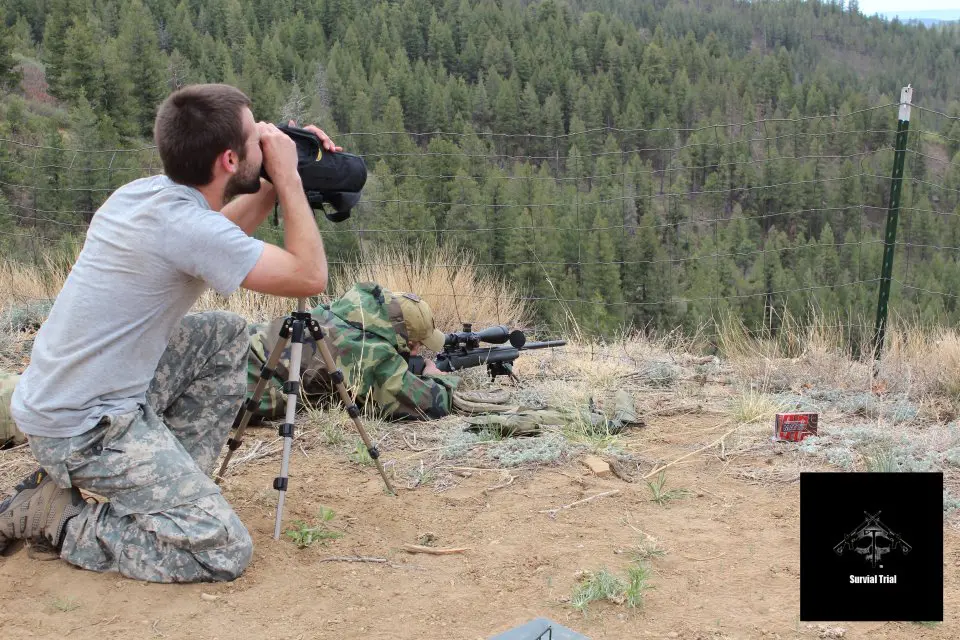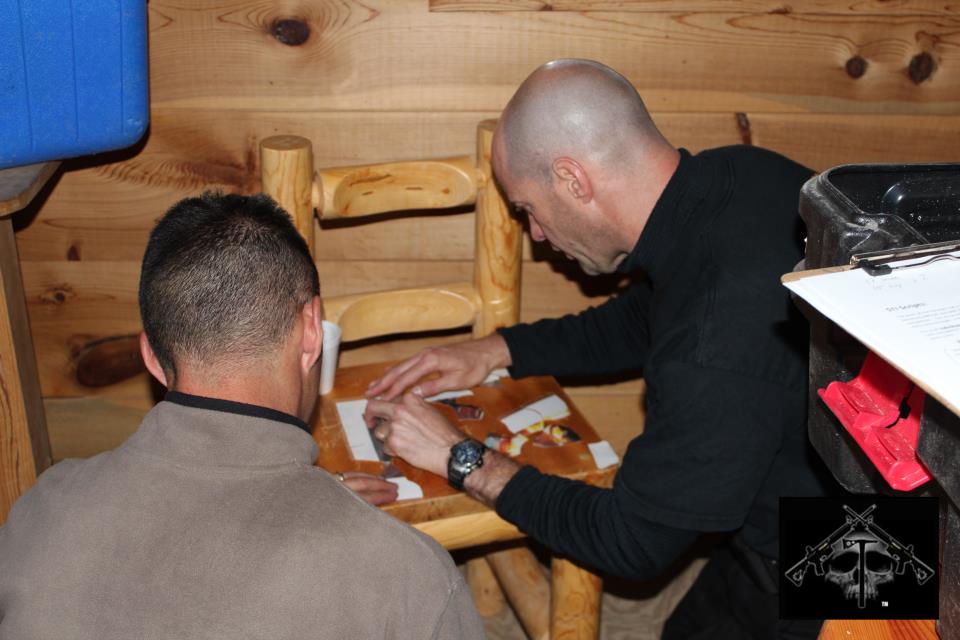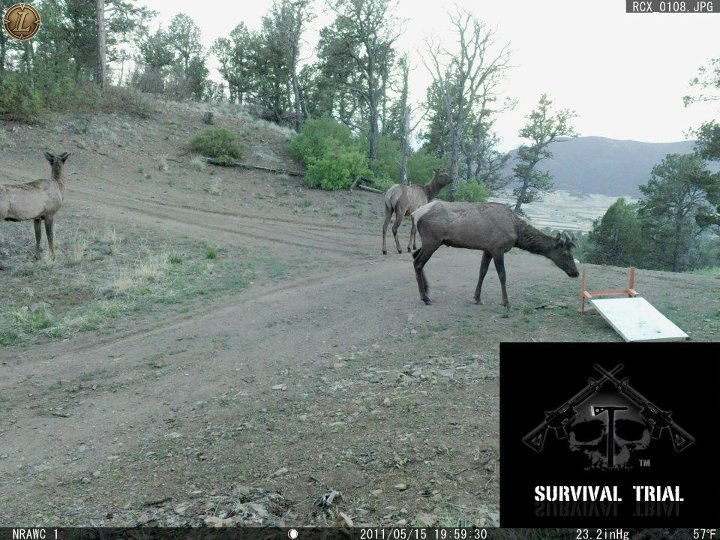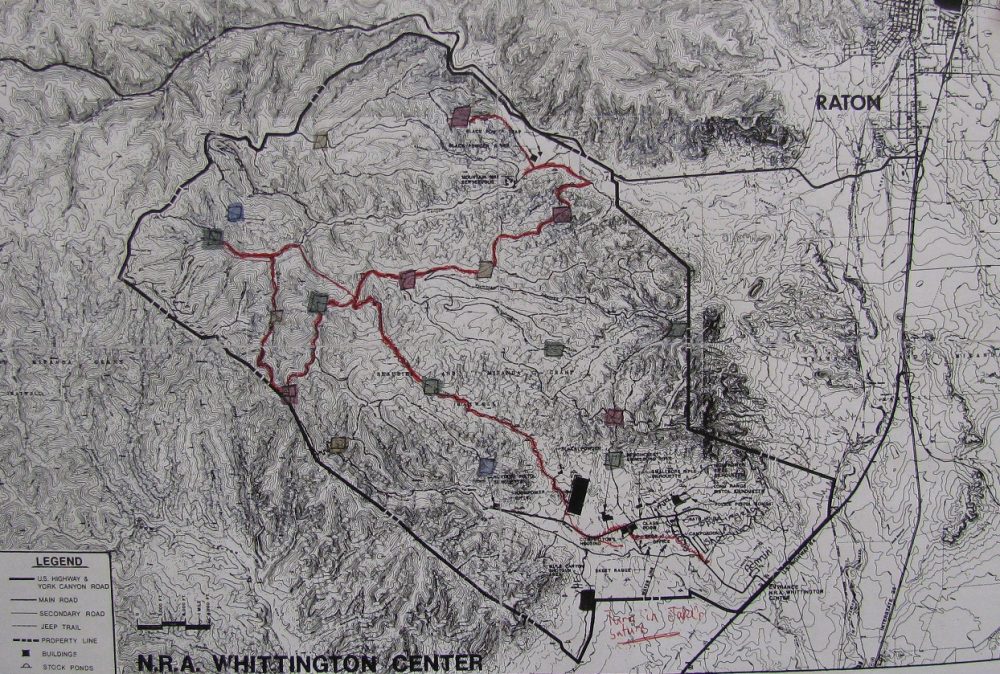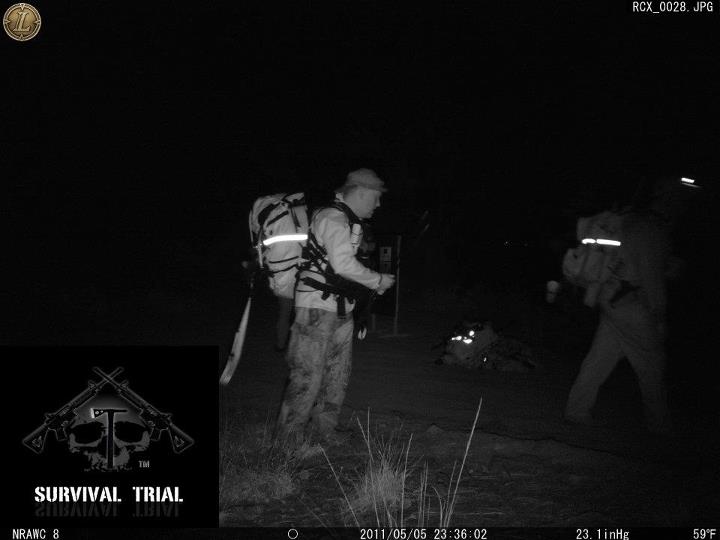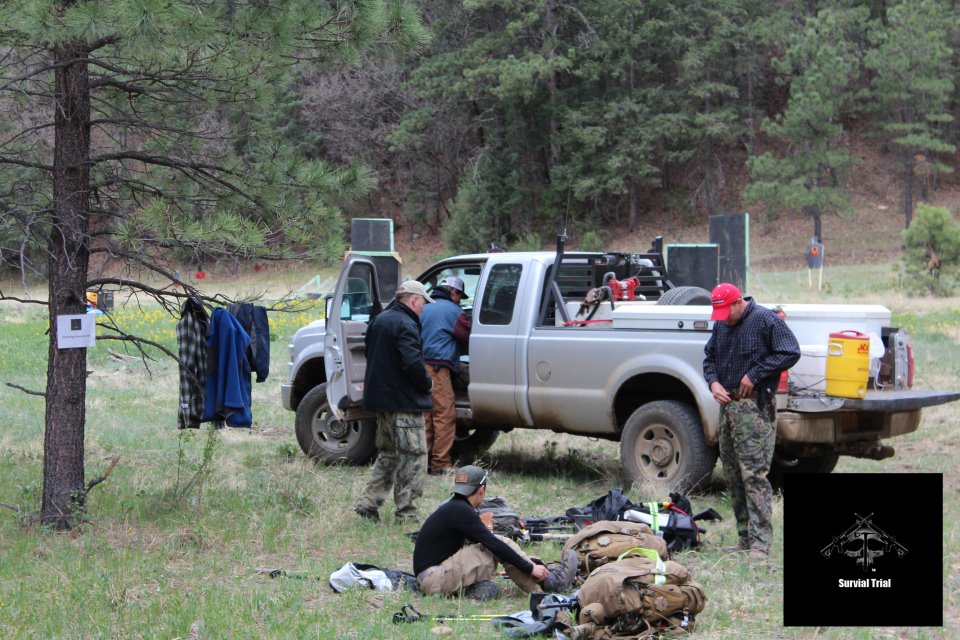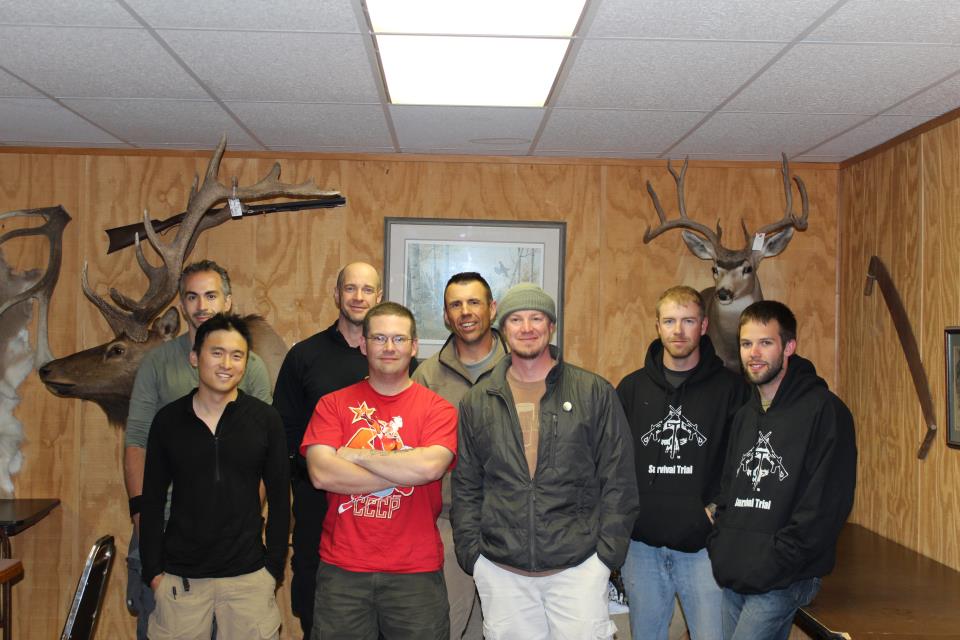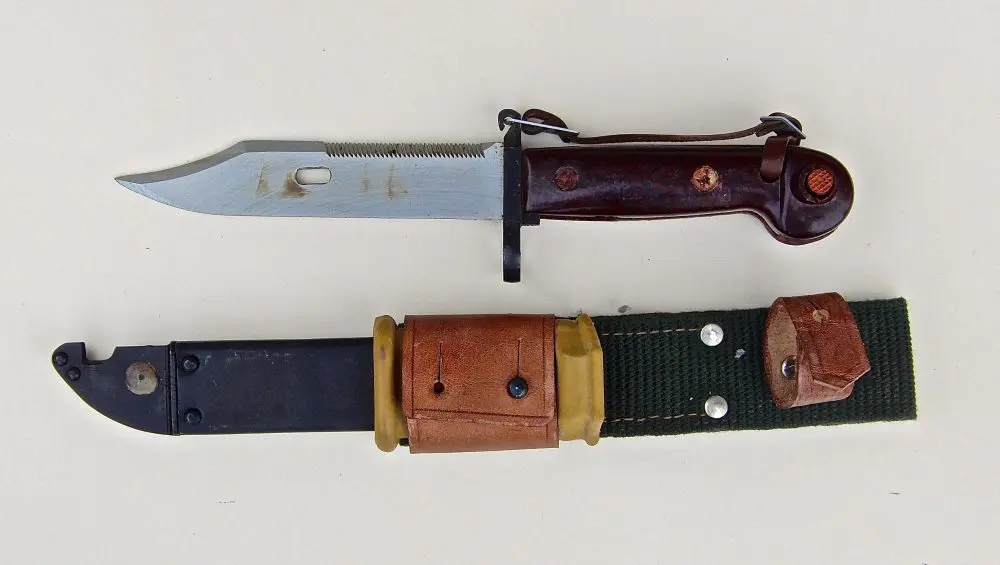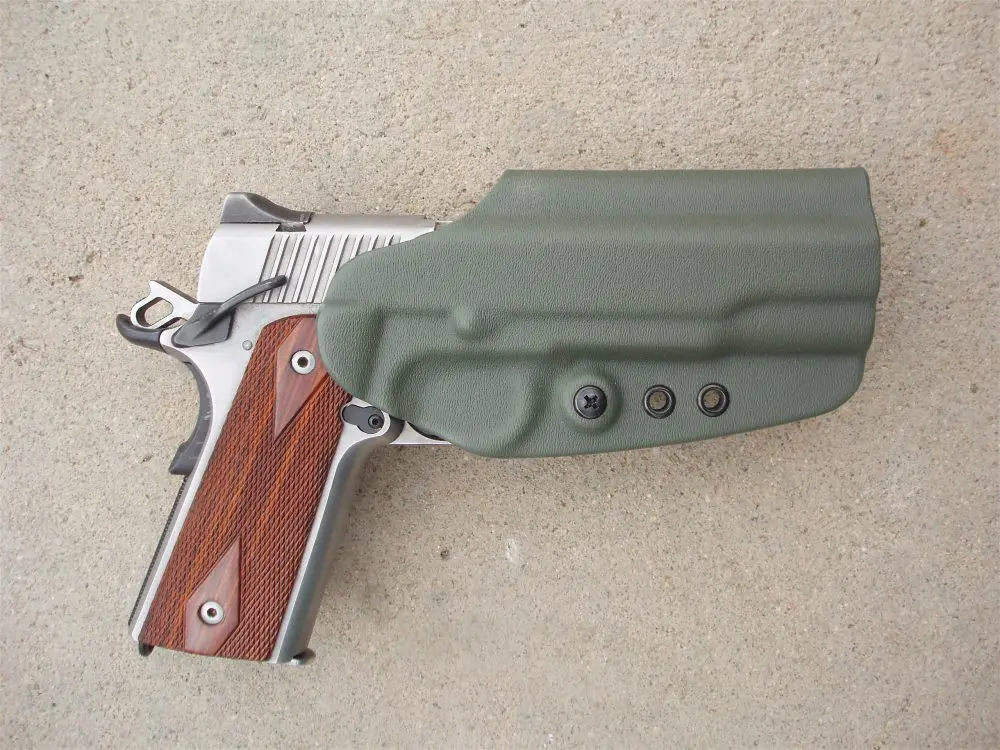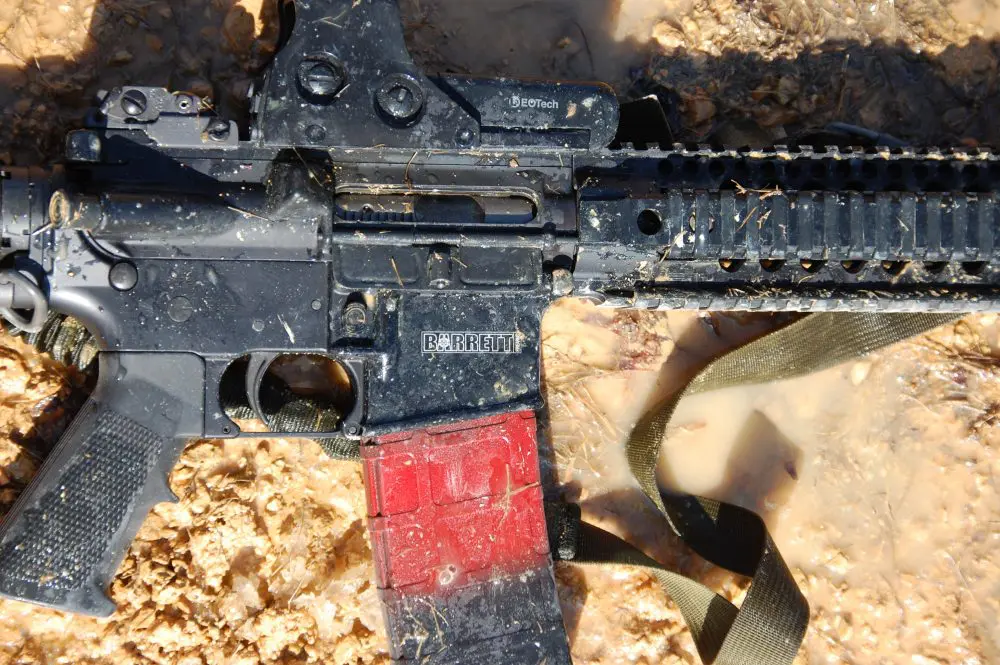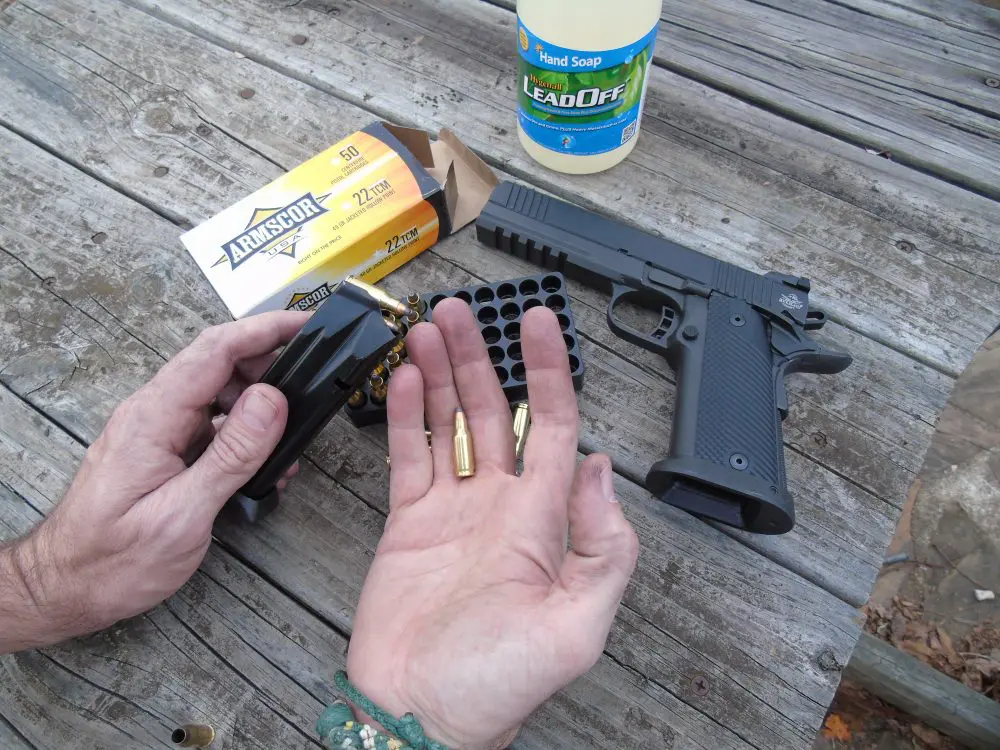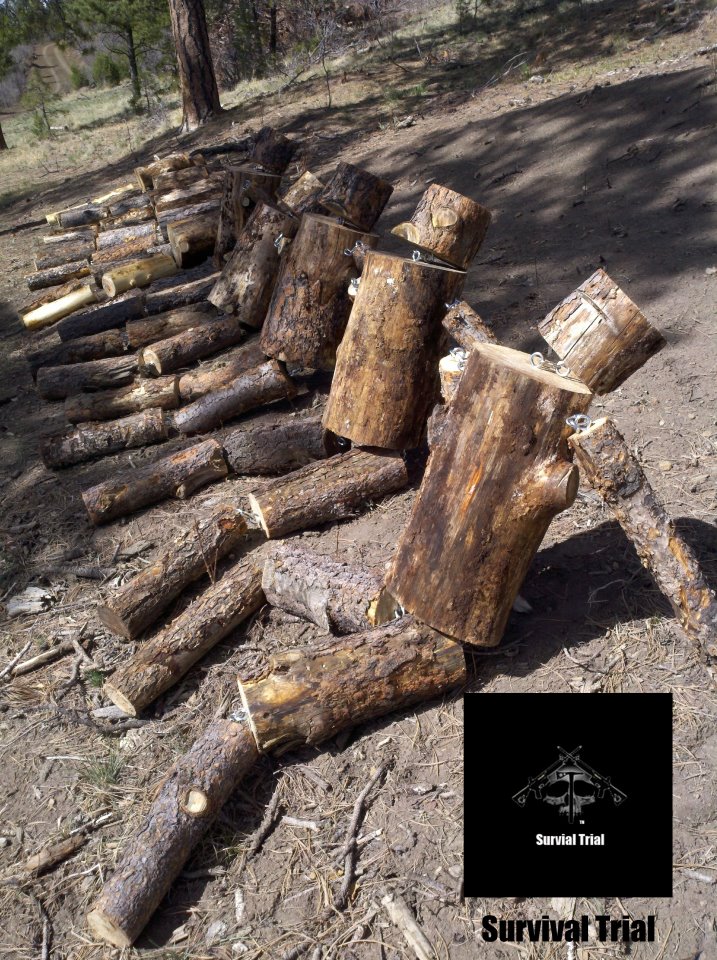
People today are farther removed from being able to—or needing to—survive on their own more so than at any other time in history. Restaurants and grocery stores bring food and water easily within reach. Law enforcement and military personnel protect us from those who would harm us. Advanced weather instruments allow us to see approaching storms.
Society has flourished with these comforts and assets, but what happens when they are no longer there? What happens when your access to food, water and shelter is at risk? It can happen at any time to anybody—glance at a newspaper and you’ll find pages of examples.
Shooting skill, physical ability, land navigation, first aid, and thinking on your feet are all very desirable skills to have in any survival scenario, and that’s exactly what the Survival Trial tests. An avid shooter, combat crossfitter, and adventure junkie, Jon Wieler of Professional Marksman has put all those eggs in one basket.
The event takes two-man teams willing to step outside their comfort zones, places 40 to 70 pounds of guns, gear, food and water on their backs, and drops them off in the back country of the NRA Whittington Center in Raton, New Mexico for 24 hours. Given a map they have never seen and very few rules, the teams step off at the sound of Jon’s watch, which in the darkness of 2200 hours sounds like a foghorn.
Table of Contents
READY…GO!
Anybody who knows how to read contour lines on a topographic map will look at the terrain of the Whittington Center back country and quickly recognize that all seven terrain features are represented in the 52-square-mile playground. Hills, ridges, spurs, saddles, cliffs, draws and valleys are all on the menu, and each team will get their fill.
Team Wanderers attempt to piece together a puzzle for valuable points. Mental and physical exhaustion make such a simple task difficult.
The map is littered with the locations of shooting, physical, mental and prize stations to be pursued at each team’s discretion. The first challenge is deciding where to go and what to do. Should I stay at the start and formulate a good plan, or throw on my ruck, start moving, and plan on the fly? Each station is worth a different point value, and as much as this competition is meant to be survived, it is also meant to be won. Strategy is key.
The first few miles to reach a station are positive. The body is still fresh, the plan seems perfect, and the pack hasn’t started digging in yet. But the comfort and ease of these first few hours slowly start to erode as you check your watch to see if you are covering the constant up and down terrain fast enough to fulfill your plan.
Reaching mental stations at 0400 when your body and mind are normally asleep makes a simple riddle seem like calculus. Almost as soon as the pack comes off for a brief rest, its familiar weight is back to its devilish ways as you conquer another hill. Water is your friend and blisters your enemy as the miles accumulate.
Taken from a trail camera placed along the course, elk have knocked over the checkpoint stand. And elk were not the only wildlife teams encountered during the course.
Working from one point to another separated by miles of unfamiliar landscape at night can be challenging. Using terrain association to figure out if you are on this hill, or this one here, or no, maybe this one over here, can be an effort in frustration when the map doesn’t agree with what you can’t see. Your mind begins to argue with reason, and before long you don’t know whether to press on into the climbing darkness or turn back the way you came.
Keeping a pace count to gauge how much distance you have covered is an attractive proposition, but doesn’t help the mental arguments when steps cover six inches of hill at a time. You may have a mile to go—or just around the bend. The only way to find out is to keep putting one foot in front of the other.
SHOOTING STAGES
The shooting stages are realistic and demanding. There is no two-minute prep time in the Survival Trial. You are given a situation brief and time to load your magazines, and then it’s time to deliver the lead. Good shooters are tested and great thinkers challenged with situations that cause you to think, move and shoot with handgun, carbine, and long-range bolt rifle.
Using Superformance ammunition, Team Hornady engages 900+ yard target from a mountaintop.
The shooting is designed to push and pressure shooters to see how they come out on the other side. Time limits for each engagement are fast paced and allow no unrealistic time for “gaming” the stage, as other shooting styles do. The long-range shot was especially challenging, but could be accomplished. Shooters don’t know what ammo they are using until they arrive at the shooting station. They are shown the targets through binoculars, but have no idea of range, angle or wind speed.
As soon as competitors start to realize how much they don’t know about the situation and how much they need to know to be successful, the clock starts. Nothing tests a shooter’s skill like having to think through various problems against a ticking clock and maintain marksmanship and weapons manipulation principles simultaneously while exhausted. When the targets are perforated, rung or exploded, it’s time to ruck up and pound more ground.
Map given to each team five minutes before start of race reveals checkpoint locations. This map is from Team Hornady. Red line represents path they took. Red boxes are mental stations, blue are physical stations, green are shooting stations, and gold are “golden baskets.”
MENTAL AND PHYSICAL CHALLENGES
Physical endurance may be a constant battle throughout the 24-hour journey, but mental fortitude is doubly tested. Twenty hours in, the mind wants to stop, lie down and rest from the constant barrage of physical effort. The battle rages as strides turn to shuffles and ski poles become your new best friend.
Each team’s goal of crossing the finish line before the 24-hour limit is a dangling carrot worth a hefty sum of points, but it doesn’t come without a price. The finish line was placed in the flatland on the other end of the center, which may sound like an easy finish to those who haven’t seen it.
First, the land isn’t exactly flat, though it is much flatter than the rugged mountains you’ve been stumbling around in for the last 20 hours. As you come out of the mountains, the landscape becomes visible for miles and miles, including the finish line. It hovers in the distance like a desert oasis as your battered legs and feet get closer with each step.
Moment of respite from the loneliness of the wilderness at night. Third rucksack is one team passing another in the darkness.
The mental anguish reaches a peak when you’ve covered a few miles and the finish line doesn’t look any closer. You crest a plateau only to find another and yet another, as though some landscape magician is playing tricks on you. However ragged your perseverance becomes, Jon’s secret to success in the Survival Trial sticks in your mind: “Don’t quit.”
Like overcoming any adversity, crossing the finish line is difficult to describe without experiencing it. Elation at conquering a tough task is felt by all, but something deeper is discovered about the self that brings a sly understanding smile to the face.
The ranges are not square, the terrain is not flat, and the packs are not light, but this should be expected from an event titled Survival Trial. It wasn’t easy, but nothing truly rewarding ever is. You will be strong at some moments and weak at others. The trail will test what you have inside and demand your most valuable skills in the darkest hours.
Team Chupacabra and Team Lost Boys simultaneously arrive at shooting stage just after dawn.
IS IT FOR YOU?
For future competitors, I recommend getting used to being under a pack with 40 to 70 pounds of gear. I have found no alternative way to train for the weight of a pack over miles of rough terrain. Being in good physical condition to begin with is a good idea, but throwing on a pack while working your way up in weight and distance will pay off dividends.
Have a good understanding of your food consumption under similar conditions. A difficult task is made even tougher when you’re starving and running out of vital caloric energy.
Understand your gear and how to use it in various weather conditions during the day and at night. Ultimately, plan for the event as though you will have to survive in a rough, unforgiving landscape—as this is essentially what you will be doing. Pack wisely, plan the accessibility of each piece of gear in your kit, and remember that ounces make pounds and pounds make pain.
The four teams that finished Survival Trial 1
Given enough time, I wouldn’t bat an eye at competing in the Survival Trial again. The memories made and lessons learned will stay with me for years to come and can be applied to many aspects of life—not just survival. It is a phenomenal testing ground that will expose flaws in yourself, your gear, and your skills. Experience cannot be replaced, especially during a survival situation, when failure is not an option.
If you’re tired of talking and want to start walking, pick up your pack and get registered for the experience of a lifetime. The Survival Trial is a unique competition that is envied by most and tried by a brave few, whom upon its completion Jon dubs “Survivors.”
The next Survival Trial, STIII: Winterborn, is scheduled for 23-24 February 2013 at the NRA Whittington Center in Raton, New Mexico. It will surely offer new challenges due to the wintertime dates. Contact Professional Marksmen for more details and to sign up.
SOURCE:
Professional Marksmen
(605) 610-8598
www.professionalmarksmen.com
